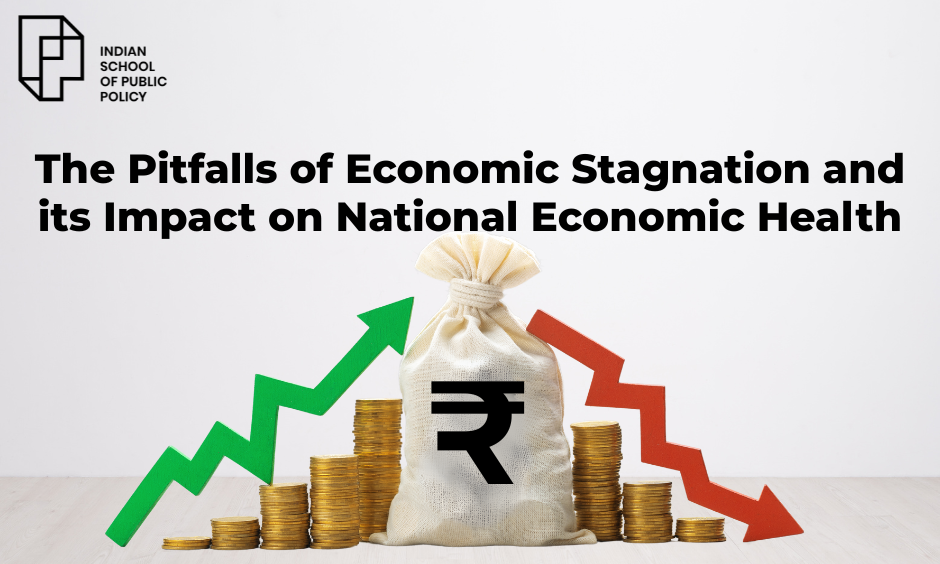
The Pitfalls of Economic Stagnation and its Impact on National Economic Health

Economic stagnation—a prolonged period of slow or no growth in an economy—can have far-reaching consequences on a nation’s financial stability, societal well-being, and global standing. While temporary slowdowns are natural, persistent stagnation can erode economic resilience and widen disparities. Understanding its causes, impact, and potential remedies is crucial for policymakers and stakeholders aiming to sustain long-term economic health.
Causes of Economic Stagnation
Economic stagnation arises from a combination of structural, demographic, and external factors. One major contributor is declining productivity growth, where businesses struggle to improve efficiency, leading to stagnant wages and limited economic expansion. Similarly, demographic challenges, such as aging populations, shrink the labour force, reducing consumption and investment. When coupled with weak consumer demand, where households experience lower income growth and consequently cut spending, economies find it difficult to sustain momentum.
Another key issue is lack of innovation—a sluggish pace of technological advancement and limited investment in research and development can stifle new business opportunities. Furthermore, structural rigidity, including overregulated markets, bureaucratic inefficiencies, and rigid labour laws, can prevent economies from adapting to changing global dynamics. Finally, external shocks, such as pandemics, trade wars, or geopolitical conflicts, can weaken economic momentum and exacerbate stagnation over the long term.
Impact on National Economic Health
The consequences of prolonged economic stagnation extend beyond GDP figures and corporate balance sheets, influencing various aspects of national well-being:
- Increased Unemployment and Underemployment – Job creation slows down, and many workers may be forced into low-paying or insecure employment, reducing overall economic participation.
- Widening Income Inequality – Wealth accumulation is concentrated among fewer individuals, leading to social discontent and a decline in consumer confidence.
- Reduced Investment in Public Services – Slower economic growth limits government revenues, restricting funding for critical sectors like healthcare, education, and infrastructure.
- Rising Debt Burdens – Governments may resort to excessive borrowing to sustain spending, leading to long-term fiscal imbalances.
- Lower Competitiveness on the Global Stage – Countries experiencing stagnation lose their competitive edge, attracting fewer foreign investments and struggling to maintain strong trade relations.
- Erosion of Social Cohesion – Economic uncertainty can foster political instability, populist movements, and a lack of trust in institutions.
Pathways to Overcoming Economic Stagnation
Addressing economic stagnation requires a multifaceted approach combining short-term stimulus measures and long-term structural reforms:
- Enhancing Workforce Skills – Investing in education, vocational training, and lifelong learning initiatives can ensure a dynamic labour force capable of adapting to technological advancements. Governments and businesses must collaborate to create industry-aligned programmes that equip workers with relevant skills for emerging job markets.
- Encouraging Innovation and Entrepreneurship – Establishing strong startup ecosystems and providing financial incentives for research and development can drive technological breakthroughs. Public-private partnerships, incubators, and access to venture capital can nurture a culture of innovation that fosters sustainable economic growth.
- Infrastructure Development – Investing in modern transportation, energy, and digital infrastructure can unlock productivity and facilitate business expansion. Efficient infrastructure not only enhances connectivity but also attracts foreign direct investment, creating a ripple effect on economic activity and employment opportunities.
- Regulatory Reforms – Overhauling outdated regulations, reducing bureaucratic inefficiencies, and streamlining business processes can create a more conducive environment for private sector participation. Simplified tax policies, faster permit approvals, and transparent governance can encourage entrepreneurship and attract global investors.
- Monetary and Fiscal Policies – A balanced mix of monetary easing and well-targeted fiscal spending can stimulate demand, promote credit availability, and support business expansion. Policymakers must focus on inflation control, interest rate adjustments, and stimulus packages that encourage investment without increasing unsustainable debt burdens.
- Sustainable Economic Policies – Prioritising green technologies, circular economies, and sustainable industries can open new economic frontiers while addressing climate concerns. Investing in renewable energy, carbon-neutral production methods, and sustainable agriculture can create jobs, improve environmental resilience, and future-proof national economies against global disruptions.
A Call to Action for Policymakers
Economic stagnation is not merely an abstract concern—it directly impacts livelihoods, national stability, and future growth prospects. Addressing its root causes through strategic interventions can rejuvenate economic momentum, ensuring a resilient and prosperous future. Policymakers must embrace bold, forward-thinking strategies to navigate these challenges and foster sustainable development.
The Indian School of Public Policy (ISPP) is dedicated to equipping future policymakers with the skills and knowledge needed to tackle economic stagnation and drive national development. Through its flagship post graduate programme in Public Policy, Design & Management, ISPP provides rigorous academic training, hands-on learning experiences, and engagement with industry leaders. By fostering a deep understanding of economic policies, governance structures, and innovation-driven solutions, ISPP empowers professionals to craft policies that promote sustainable growth and economic resilience.
Register your Interest to Study at ISPP
FAQS
What is economic stagnation, and why is it a concern?
Economic stagnation refers to prolonged slow or no growth in an economy, leading to rising unemployment, income inequality, and reduced global competitiveness.
What are the primary causes of economic stagnation?
Key causes include declining productivity, weak consumer demand, lack of innovation, structural rigidity, demographic challenges, and external shocks like trade wars or pandemics.
How does economic stagnation impact national economic health?
It results in higher unemployment, widening income inequality, reduced public investment, rising debt, and weakened global trade competitiveness.
What policy measures can help overcome economic stagnation?
Reforms should focus on workforce upskilling, fostering innovation, infrastructure development, regulatory ease, balanced fiscal policies, and sustainable economic strategies.
Why is innovation critical in tackling stagnation?
Innovation drives new business opportunities, enhances productivity, and attracts investment, making economies more resilient and competitive.


